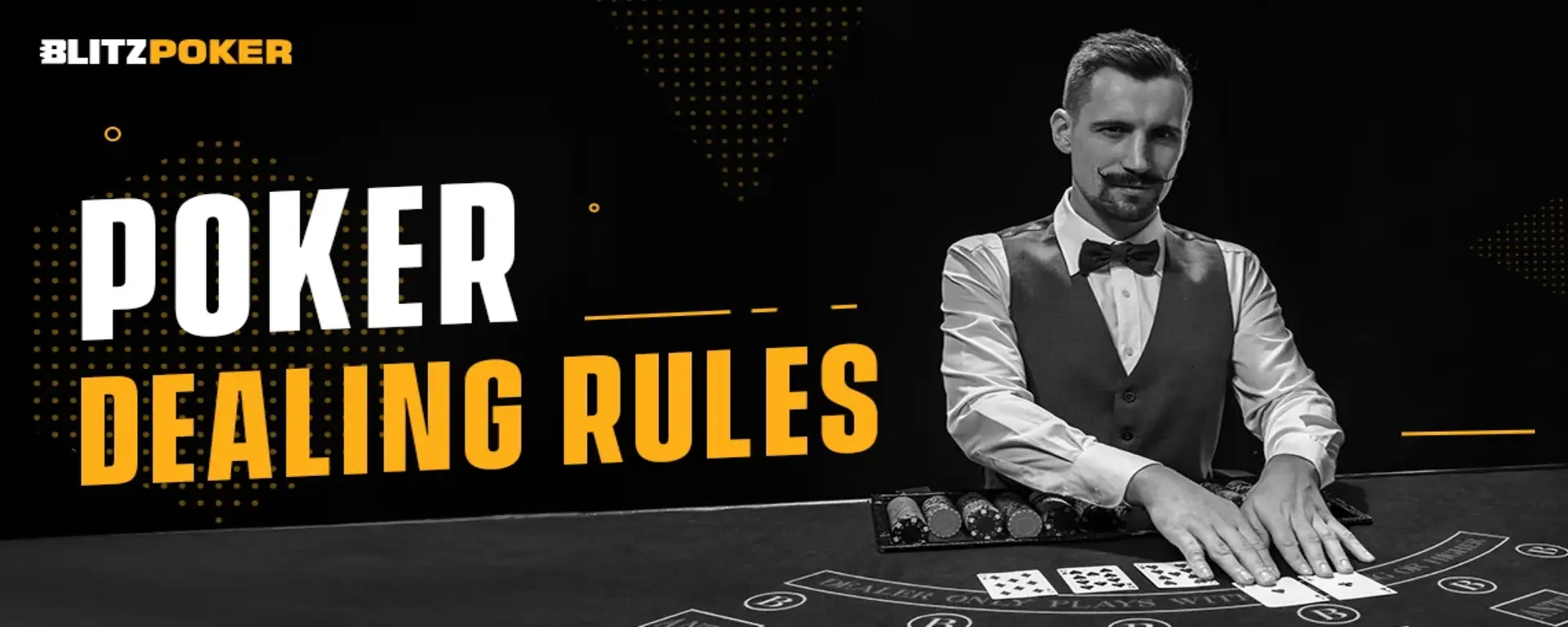Poker Dealing Rules
The person in charge of dealing hole cards to the players and community cards in a poker hand, along with overseeing the pot and bets throughout the betting rounds, is known as a poker dealer. Whether this duty rotates among players in a home game or is assigned to a dedicated person, like the dealers at cardrooms or casinos, the poker dealer plays a crucial role in ensuring the game moves smoothly and efficiently from one hand to another.
Responsibilities of A Poker Dealer
Here’s What Poker Dealing Rules Consist Of
Shuffling the Cards
Before starting each hand, make sure to shuffle the deck well. This mixes up the cards and keeps players from guessing their positions. Casinos often switch decks every hand, using a machine built into the table for shuffling. Ensure no one sees the bottom card while shuffling to maintain fairness. A good shuffle includes at least four riffles and a cut.
Dealing the Cards
Begin dealing with the player to the left of the dealer button, providing two hole cards to each player. How you deal can vary, following either an American style of flicking the card face-down or a European style of sliding and spinning the card onto the table.
Managing the Pot
As the dealer, it’s your job to oversee the betting rounds and ensure correct bets from players. All actions depend on the position of the button. At Preflop, the betting starts with the player seated to the left of the big blind. Postflop, it begins with the player to the left of the dealer button who remains in the game.
Burn and Turn
After each round of betting, discard the top card into the muck pile before dealing the required community cards. This prevents players from identifying marked or imperfect cards by their backs.
Awarding the Pot
When a showdown happens, determine the winning hand and hand over the chips accordingly. In a tie, divide the pot equally among the winners. If there’s an odd chip, give it to the player closest to the left of the button in Texas Hold’em.
How Are Poker Cards Dealt? | Steps to Dealing The Cards in Poker
Now that you know the poker dealing rules, let’s get to the procedure of dealing. In a game of Texas Hold’em, here’s a step-by-step breakdown of the dealing process:
Step 1: Deal 2 cards face down to each player. Deal 2 cards face down to each player. The player in the small blind receives the first card, which is the player to your immediate left. They should place a bet equivalent to half of that round’s full bet.
Step 2: Monitor the “pre-flop” betting round. Go around the table, allowing every player to raise, call, or fold. Starting from the small blind and moving clockwise, bets are made until every player has either folded, matched the bets, or put in their chips.
Step 3: Deal a flop. After every player has contributed a blind or an ante, deal three shared cards to each player, starting from your left and ending with yourself. This initiates the second round of betting.
Step 4: Deal a single community card (the turn). The first shared card is dealt, known as the turn. This incomplete hand is combined with the face-up community cards. A third round of betting takes place, moving clockwise from your left.
Step 5: Deal another community card (the river). Another community card is dealt, known as the river. This initiates the fourth and final round of betting before the showdown.
Step 6: Call for the players to reveal their cards. Players reveal their cards to determine the best 5-card hand using the 2 cards in their hand and the 5 on the table. The player with the best hand wins.
This sequence of dealing and betting continues in each round of Texas Hold’em until a winner is declared at the showdown based on the best hand formed.
